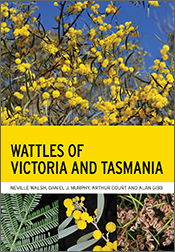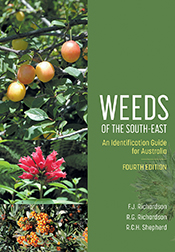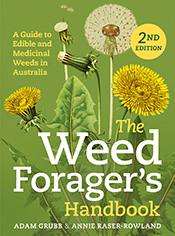Wattles of Victoria and Tasmania
By: Neville Walsh, Daniel J. Murphy, Arthur Court, Alan Gibb
A guide to the 121 species and subspecies of wattles found in Victoria and Tasmania.
Wattles (Acacia) are among the most vibrant plants in the southern Australian bush, with their iconic yellow blooms particularly visible in late winter and spring. As the largest genus of flowering plant in Australia, they are one of the most resilient, recognisable and culturally significant native plants. However, they can be difficult to identify at a species level. + Full description
This comprehensive guide to all 121 species and subspecies of wattles found in Victoria and Tasmania includes notes on the habitat, distribution and special properties of each species. Identification keys, high-quality field photos and distribution maps enable easy identification, and fascinating detail on the etymology of species names, their use as food and the taxonomic history of the group is also included. This guide will inform and inspire botanists, conservationists and wattle enthusiasts.
- Short descriptionReviews
"Double page spreads per species of very helpful photos of flowers, foliage, pods and habit, and paragraphs on all the descriptive features that one would expect, plus etymology, conservation status and similar species. There is a very comprehensive key for each state at the start of the book, which represents a lot of work by the authors."
Ian Fraser's Natural History Reviews, February 2025
"The collective experience of the four talented authors shines through, bringing you the flavour of the plant: where it lives, who it hangs out with, and quirky features or stories associated with it. Also present is the trademark of a really useful guidebook: descriptions of similar species and the key features to look for when distinguishing them."
Fiona Murdoch, Growing Australian No. 271, March 2025
Details
Paperback | March 2025 | $ 59.99ISBN: 9781486317967 | 292 pages | 245 x 170 mm
Publisher: CSIRO Publishing
Colour photographs, Maps
ePDF | March 2025
ISBN: 9781486317974
Publisher: CSIRO Publishing
Available from eRetailers
ePUB | March 2025
ISBN: 9781486317981
Publisher: CSIRO Publishing
Available from eRetailers
Features
- Covers all 121 Acacia species and subspecies found in the wild in Victoria and Tasmania.
- Provides identification keys to all species.
- Features photographs of habit, flowers, fruits, seeds, as well as distribution maps for all species.
- Includes notes on special properties, the etymology of species names, and their use as food.
Contents
PrefaceAbout the authors
Acknowledgements
Introduction
Acacia: What’s in a name?
About wattles
Some uses of wattles
The descriptive pages
Keys to species
Key to Acacia in Victoria
Key to Acacia in Tasmania
Species accounts
Group A: Species with phyllodes; flower heads globular, on unbranched stalks in leaf axils
Group B: Species with phyllodes; flower heads globular, in racemes
Group C: Species with phyllodes; flowers in cylindrical spikes
Group D: Species with bipinnate leaves; flower heads globular, in simple or branched racemes
Incipiently or sparingly naturalised wattles in Victoria and Tasmania
Glossary of botanical terms
Further reading
Index to species
Authors
Neville Walsh worked as a botanist at the National Herbarium of Victoria, initially as a survey botanist and later concentrating on plant taxonomy and conservation. He has named over 130 plant species in a range of families and co-edited the four-volume Flora of Victoria.
Daniel Murphy is a systematic botanist at the Royal Botanic Gardens Victoria. He has a particular interest in the evolutionary history of Australia's flora and the historical connections of this flora to other parts of the world, and has focused much of his research on Acacia and related legumes.
Arthur Bertram Court (1927–2012) was a dedicated botanist known for his expertise and passion for the Acacia genus. He served as the Australian Botanical Liaison Officer (ABLO) at the Kew Gardens in London from 1966 to 1967, took on the role of Curator of the Herbarium at the Canberra Botanic Gardens (later the Australian National Botanic Gardens) in 1974 and became the Assistant Director of National Collections in 1983. The plant Acacia courtii – commonly known as the North Brother Wattle – was named in his honour.
Alan Gibb (1943–2022) was a farmer, bushman and self-taught photographer. Known for his deep knowledge of flora and fauna, his wildlife photography has been exhibited and used for various publications. He led nature tours through outback Australia for many years where his particular love of Australian wattles was nurtured. The Mt Typo Wattle (Acacia boormanii subsp. gibba) was named in his honour.








